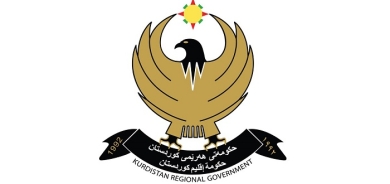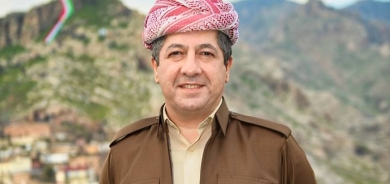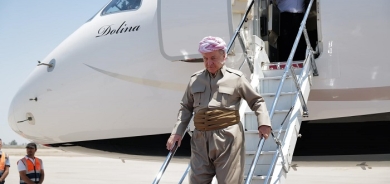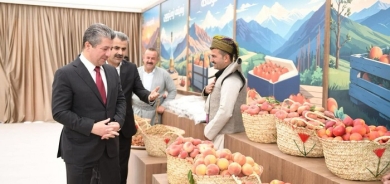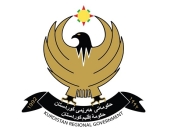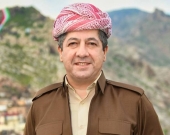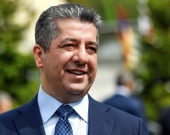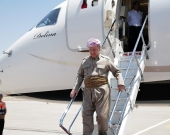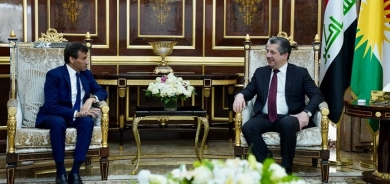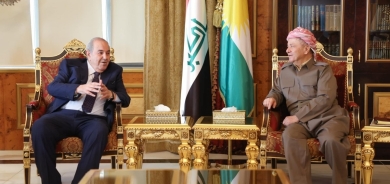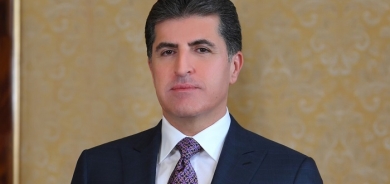The Nation's Discourse in the Renaissance Process is the Product of the Idea that Answers the Future Questions

Mohammed Abid Jabiri
Renaissance, in literal terms, means to be born again. However, if we look at from the content and through it making analyses of our own reality, we can consider it the nation's future process. This means that renaissance is that picture that does not exist yet and is the product of that idea that has produced that awareness and embraces the nation's future picture. That is why always the renaissance process comes before decisive decision or revolution process. If from this angle we look at the European history, thence to the Renaissance process, as new birth process or the process of Europe's future generations after the medieval centuries, we can feel that practically the process is a new birth process, because the medieval centuries Europe, comparing to post-Renaissance Europe, has been considered as weak and death, and the European nations in the Renaissance process have considered chosen their future as a nation. That is why in this history always the renaissance process proceeds before the revolution process, or before the self-determination process.
The French Revolution was idea product of Renaissance, and not the opposite. Thus, the discourses during the Renaissance produced the French Revolution, the revolution which created a historical split between old and new governing system and worked to prove that humans will have their rights protected by that system.
Was the French Revolution able to establish the system that the discourses during Renaissance had imagined about? This Revolution too like the other revolutions was not out of shortcomings. Although it didn't produce wholly the system that the discourses of the Renaissance period had imagined, but the principles of the Revolution had emerged from the environment that Renaissance had brought about. Thus one can say that assessing the nation's discourse during the renaissance is an epistemological one not ideological. This applies for the Independence Declaration for the United States which it was a product on another similar renaissance. Thomas Jefferson, who had written the Declaration, was one of the European's Renaissance man and the renaissance discourse has reflected in the American Independence Declaration. Again, that Declaration didn't bring about the system in U.S. that the Americans feel liberty, and until decades after the country's independence, some of the Americans were slaves of the other Americans. Even Lincoln, for the sake of preserving and surviving the Independence Declaration which included items about the liberties and freedoms of American citizens, decided to launch war and ended the slavery, but, once more, the end of slavery didn’t results out in the end of racial segregation, which only ended 190 years after the Independence Revolution by Martin Luther King.
Mohammed Abid Jabiri, in his book "Old and Contemporary Arab Discourses" mentions that discourse is like building a house. The house is being build, only reflecting the one who built it, the same for discourse; meaning the commitment of the discourse owner to the principles of the discourse. This does not imply that discourse as a nation's renaissance process is not dealt with as ideological, but it is assessed on its intellectuality level, and discourse, as a project for future, owns an image that shows an departure from the current status quo and the future realities of society. In between, which the first is the status quo and its leader is not convinced with the current reality and during his discourse he shapes another discourse for his nation, then in this case when the this discourse is directed towards the nation by the leader, the citizens should differently participate in this discourse and should try to implement the image in the discourse on reality according to the situations. This message implies that the leader discourse during the delicate periods of the nation requires citizens participatory, leaving another duty on the leader, making the discourse's meanings more clear for the nation's individuals and convincing them that the mission will be accomplished if the discourse is followed. Importantly, not necessarily, do the nation’s citizens have to share or agree with the leader's perspectives for achieving a certain goal or passing successfully through a period. The differences in opinions between citizens and the leader in that period about the same goal, creates a democratic environment and produces a direct dialogue between the leader and its fellow citizens. Since the leader is elected by vote of the people, when making critical decisions, or when stepping towards implementing his future image discourse, he must convince his people and inform them about the image in his discourse. This method tells us that the individual’s participation in the goals the words of the discourses have imagined does not mean that the individuals abide by the words exactly as they are. Rather, the people can rebuild the discourse and try to combine the obvious words of the discourse and its general meaning and presenting it stronger. They can also look at the discourse from a critical perspective and assess the discourse for its context and make suggestions. Since the leader the most authority he has is the people, he must have serious answers to the questions of the people about each word in his discourse and convince them. And the success of each leader in his critical period discourse makes him the nation's symbolic leader.
Problems of nation's discourse in critical periods
The history of world's successful leader is clear from the problems between the president and its nation during the sensitive and critical periods. During critical periods, the leader has an obligation to arrange the nation's discourse and try to achieve the nation's goals by the least victims and through the best ways. Those terms the leader use for building its discourse is abiding by those principles that the discourse is built by. The discourse in general resembles the leader's capability and skills in his architect design of the discourse. Of course, all types of buildings have different methods for its building. When the leader chooses one of the buildings for buildings its discourse, the citizens or the individuals have their right to ask their leader why that method has been selected. We mention several methods here:
1- Looking at the independence discourse of the old India (that includes current Pakistan and Bangladesh), Mahatma Gandhi in that critical period had build the discourse on the base of non-violence to get India's independence from England. The Indian independence history tells us that all the citizens of the then-India strikes us on how a nation survived and attained independence from the world's most strong and powerful state. The Indians were asking themselves, what elements did our leader use for building that discourse? How the goals of this discourse are attained? For their answers, Gandhi started to walk around each village and city of India and to clarify the goals of this discourse. When he was blocked on this road, he decided to work in two ways: convincing his own and his conqueror's nations to end the occupation. Gandhi faced the greatest threats from; the people of India hardly believed in attaining their rights through non-violence means while their conqueror was resorting to death. But since Gandhi's discourse had seen a independent India, he was ready to sacrifice himself to convince his people. Whenever the people of India resorted to violence, Gandhi used to fast or hide away from food and drink, sometimes brining him to the edge of death. His people later stopped the violence because of Gandhi he stopped his fasting and ate again. A question here arises, did Gandhi's discourse all got implemented? We can answer that Gandhi had two goals in his discourse; first, the independence of India by peaceful means succeeded, and second, building India by peace and non-violence didn't succeed and even cost him his life.
2- Another example of the problems of nation's discourse is Franklin Roosevelt's discourse of having U.S. participating in the Second World War and to put a limit for the threats and dangers of Nazism and Hitler. This example is quite opposite to the one of India and has two images. First, the people of India had potentialities to fight and give victims. Gandhi wanted to wipe off these potentialities and get the independence by peace. But, the second, contrarily to the first, the people of America wanted peace and not get involved with the War. However, Roosevelt tried to prepare them for war and giving victims. Since the U.S. Congress was representatives of the people, it allows Roosevelt to mingle their country into a global war. However, can a president who feels and predicts the future threats on its nations by the triumph of the Nazis on the Americans are without any decision? A president like Roosevelt, who is the only president in the U.S. history to have stayed more than two terms, won't abandon his decisions easily. Therefore he decided to get engaged in direct talks with his people, but not through visiting each state, but through radio and that method which he himself called "fireside chat," meaning to make his people aware of the fire that it will face the people of America soon. Ultimately, he was able to go ahead with his decision and win the War with her allies and making his country world's most powerful country.
These two examples were given two clarify the people's participation in the nation's discourse in the critical periods, which the leader will be the discourse's spokesperson, and the discourse shapes the future of the nation.
Nation's future image in Barzani's discourse
In all the discourses of Mr. Masoud Barzani who is now the elected president of the people of Kurdistan, there is an image seen where he says the people of Kurdistan should have the same rights as any other nation in the world, what is for other people right, should not be a taboo for the people of Kurdistan. The image of the people of Kurdistan by President Barzani is a free nation and it makes its decision freely. But this freely made decision by the people of Kurdistan must not be without program and having no respect by the rest of the world or the suitable ground is still not there for which the world respects its decisions. President Barzani warns on not endangering the future of nation. The Barzani's discourse for the future of people of Kurdistan can be explained in two arguments:
First: The image that Barzani's discourse shows us the future of the people of Kurds and Kurdistan that it should be free as the rest of the world and makes its decision freely.
Second: How to provide ground for this freedom, how to convince the world and the contemporary international and regional politics that the Kurdish nation has this right and want to practice it.
These two argument portray the image of nation from Barzani's discourse, that it the demand of all individuals of the nation, including Masoud Barzani. Regarding its first argument, President Barzani won't face any impediments to implant this image inside the nation's individuals. But regarding the second argument, which is the preparation for this phase, President Barzani faces several obstacles that not only requires the convincing of the people of Kurdistan, but also all the other Kurdish, non-Kurdish Kurdistan and Iraqi groups and political parties, that the guide his discourse has drawn is in the interests of the people of Kurdistan and Iraq and serves peace and stability in the region and in the international area. That is why President Barzani's second argument will be very difficult, as during the Brookings think-tank in 2009 President Barzani was introduced to the audience by Kenneth Pollack saying: "Mr. Masoud Barzani for the Middle East is like Paris for France and all the ways lead back to him." In this stage, Masoud Barzani should have answer for all the related things that are linked to the aims of the nation's discourse in this stage.
Barzani's program for the nation's future
President Barzani has several times said that he prefers the word "Peshmerga" over "president". This message also bears his nation discourse, meaning that he has become Peshmerga for the sake of the motto "Kurdistan or death". For more than a half century he has been Peshmarga upon this motto. But in the program of this Peshmerga there are two main goals that have become his bases. First is to have unity inside Kurdistan, particularly between the political parties, second is to work and struggle together to achieve this goal peacefully.
Thus, we can understand the duties of Barzani in this stage are not easy and he should to do his presidency according to the image reflected in his discourse. The image is the image of a free nation that all its ethnicities, religions and communities live together on this piece of land non-forcefully, and the political parties have colored the nation by their plural outlook. But in this period, President Barzani should transform the current outlook of the administration of Kurdistan Region:
1- As he did do an initiative to gather all the Iraqi and Kurdistan political parties in Erbil to reach an agreement on the government formation- called Erbil Agreement-, President Barzani has now to force them moral obligations for all the participations to implement the Erbil's Agreement, in order to achieve the coexistence and tolerance between the Iraqi communities similar to Kurdistan Region. This is in order to stop the threat that is expected to come after the American forces withdrawal, which is civil war.
2- Treating the disputed territories citizens as part of Kurdistan and trying to create a ground so as they return back to Kurdistan in a peaceful way. This step requires certainty and guarantee of the non-Kurdish people of the area. In his visit to Kirkuk, President Barzani assured all that there won't be any problems over power distribution and that the Kirkuk administration must be an example for the ethnic coexistence of the city. Regarding the identity of Kirkuk, President Barzani that the indigenous people of Kirkuk determine what its identity are and that should be within the process of normalization, census and referendum, and whatever the result be will be respected.
3- To have coexistence and tolerance in those country where Kurds are part of the country. He tries to have understanding and finding modern solution for solving the problems of the other nations with Kurds. This effort of President Barzani which practically on the political and diplomatic level has been started with Iran and Turkey and has great impact should be transmitted to the social level. There should be direct communications and modern dialogue between Kurds, Turks and Persians. They should accept each other and be able to live together in their country. In this case, instead of having the current alienation and denial policy, dialogue and understanding should start, and war and blood shedding should end.
How the nation's individuals assist their president?
No matter how many beautiful images the discourse of the president contains for the future of the nation, ultimately, it is the individuals who must make this images future reality. Until the nation's individuals, in spite of their political, religious and ethnic differences, don't become part of the nation's discourse and don't participate in it, the discourse won't be practiced in order to start its duties in that specific period.
After on September 11 2011 President Barzani started his discourse in each city of Kurdistan and clarifies his positions and attitude, the program President Barzani launched in Zakho to Kirkuk and Khanaqin, all his discourses were in one framework, one meaning, and one image. Working on the discourse's content and participating in the method of its implementation requires continuation and provide group for preparing ourselves for a decisive decision.
Translated by: Ari Mamshae

